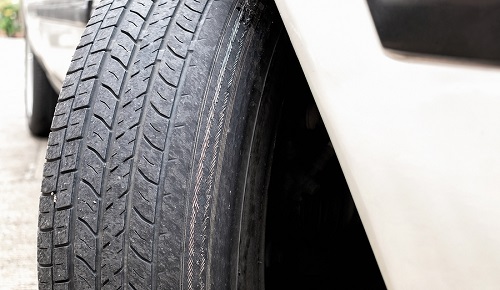Swopping your summer tyres for winter ones? Upgrading worn rubber? Or had a blow-out on a journey? Here’s how to change a car tyre.
They are the only part of your car that touches the road so, whether you like it or not, they will wear out. Tyres are a vital component on any vehicle but they have a tough life.
Rain, snow, oil, potholes, rough tracks – they have everything thrown at them. So it’s no wonder that, even though they are tough and robustly made, tyres will deteriorate or fail completely at some point.

But wearing out the tread or getting a puncture are not the only reasons why you might be thinking about removing a tyre from your car.
These are the five main reasons for changing a car tyre:
1. You change your tyres each year from ‘summer’ to ‘winter’ versions. Many drivers do this, especially those who live in areas where the weather gets extreme.
2. You are rotating the tyres around the car to ensure even wear throughout their lives.
3. They are starting to show wear. A minimum tread of 1.6mm across the central three quarters of the tyre is permitted in the UK.
4. They are getting old. Tyres are not designed to be used forever, even if their tread depth has not gone past the legal limit. Ten years should be a maximum life for any tyre, regardless of its condition. The age is marked on the tyre wall.
5. You get a puncture. A slow leak or a spectacular blow-out – either way it’s time to change the wheel.
How to change a tyre

It’s a fairly straight-forward exercise to replace a wheel, which is why you will often see people doing exactly that at the roadside. But there is a sequence to follow to do it safely. Here’s how:
1. Ensure the car is parked in a safe place, even if you’ve stopped on the road. Find a flat piece of land – never change a car wheel on a slope or hill.
2. Apply the handbrake and put the car in gear (or make sure it’s in ‘Park’ if you have an automatic).
3. Get everyone out of the vehicle.
4. Wedge the wheel diagonally opposite the tyre coming off with chocks – bricks or pieces of wood will do.
5. Remove any wheel covering or hubcap.
6. Loosen the retaining nuts of the wheel you’re removing. Don’t take them off yet though.
7. Put a jack under the car and raise it up. Cars often have arrows or markings on their bodywork to show you where to place the jack, but the vehicle’s manual will also explain this.
8. Lift the car around 20cm off the ground – just enough to get the wheel off comfortably.
9. Fully unscrew and remove the wheel nuts. And put them together in a safe place.
10. Remove the wheel by gripping it firmly on either side and pulling it towards you. If you are taking the wheel off to store it (winter/summer change), mark each one so you know which corner of the car it came from (LF for left front, RR for right rear and so on).
11. Put the replacement wheel on the car by holding it in both hands and sliding it carefully onto the wheel bolts.
12. Replace and tighten the wheel nuts by hand in a diagonal fashion – don’t do one next to the other.
13. Lower the car back to the road and tighten the nuts more firmly using a wheel brace. If you have a torque wrench, use it at the end to ensure the correct tightness. In an emergency situation, you can have this checked later.
14. Refit any wheel cover or hub cap.
15. If you have fitted a ‘space saver’ wheel, which are common in modern cars, get the punctured tyre repaired as soon as possible and get it back on the car. Space savers are not designed to be used for long periods of time.
So there you have it, how to change a car tyre... It really is that easy!
While it won't tell you about tyre conditions, running a car history check before you buy a new car could save you plenty of money and hassle further down the line.
